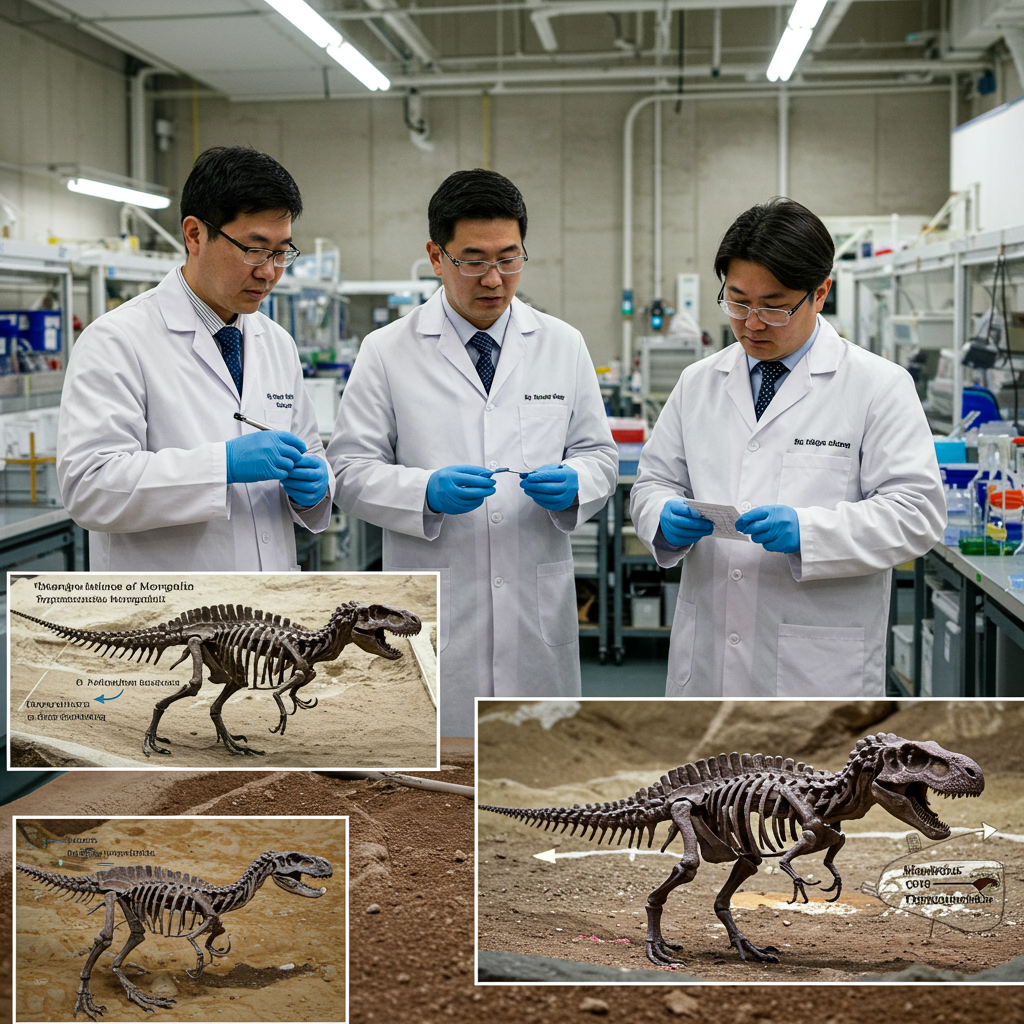A remarkable fossil discovery from Mongolia is shaking up the evolutionary history of the mighty Tyrannosaurus rex. Scientists have unveiled a newly identified species, dubbed the “Dragon Prince of Mongolia,” which they say is the closest known ancestor to all tyrannosaurs, providing crucial insights into how these fearsome predators rose to dominance.
Named Khankhuuluu mongoliensis (pronounced khan-KOO-loo mong-gol-ee-EN-sis), this ancient dinosaur lived around 86 million years ago during the Cretaceous Period, pre-dating the iconic T. rex by roughly 20 million years. The findings, published in the prestigious journal Nature, significantly revise our understanding of the tyrannosaur family lineage.
Meet the Dragon Prince
The Khankhuuluu was a mid-sized carnivorous dinosaur, estimated to have been about 13 feet (4 meters) long and weighing around 750 kilograms (approximately 1,600 pounds). Unlike the colossal, heavily built T. rex, Khankhuuluu possessed a leaner build, suggesting it was a swift, two-legged predator. Its long snout was equipped with sharp, serrated teeth, adapted for slashing bites on smaller prey like ornithomimosaurs and oviraptorosaurs, a contrast to the bone-crushing jaws and conical teeth of its much larger descendants.
Researchers describe Khankhuuluu as a crucial transitional animal. Earlier tyrannosauroids were typically small hunters, often overshadowed by other large dinosaurs during the Jurassic period. Khankhuuluu represents an evolutionary leap, bridging the gap between these modest ancestors and the gargantuan tyrannosaurs that would later rule the Late Cretaceous. As paleontologist Prof. Darla Zelenitsky aptly put it, before tyrannosaurs became “kings,” they were “princes.”
Anatomical Clues to Tyranny
Studying the partial skeletons of two Khankhuuluu individuals revealed key anatomical features that were early precursors to the traits that made later tyrannosaurs so successful. While it shared many characteristics with true tyrannosaurs, it also lacked some defining features, such as the horns and bumps seen around the eyes of later species or the fully developed snout structures.
Significantly, the research highlighted features in Khankhuuluu‘s skull, particularly in the nasal bone. These adaptations represent initial evolutionary steps towards the incredibly powerful bite forces that became a hallmark of large tyrannosaurs like T. rex, allowing them to tackle much larger prey and even bite through bone. Khankhuuluu was “almost a tyrannosaur, but not quite,” showing these features in their nascent stages.
Rewriting the Tyrannosaur Family Tree
The discovery of Khankhuuluu has helped paleontologists untangle the previously complex and sometimes confusing evolutionary lineage of tyrannosaurs. This “missing link” clarifies relationships between many species and challenges prior hypotheses, such as the idea that smaller, long-snouted tyrannosaurs like Qianzhousaurus were the direct ancestors. Instead, Khankhuuluu indicates a different path.
The revised evolutionary narrative, supported by the find, suggests that the earliest tyrannosaur ancestors originated in Asia. Around 85 million years ago, a lineage migrated to North America via ancient land bridges connecting Siberia and Alaska. Here, they evolved into larger, apex predatory forms. Later, around 78 million years ago, a group migrated back to Asia, diversifying into different branches, including the long-snouted alioramins and massive species like Tarbosaurus. The final act saw a giant lineage, likely related to Tarbosaurus, migrate back to North America around 68 million years ago, ultimately leading to the emergence of Tyrannosaurus rex which dominated until the end of the dinosaur age 66 million years ago. Khankhuuluu, therefore, stands as a distant ancestor, perhaps a “great-great-great uncle,” representing a crucial early step in this complex cross-continental journey.
A Discovery Decades in the Making
Remarkably, the two partial skeletons of Khankhuuluu were not newly unearthed. They were first discovered in Mongolia back in the early 1970s during Soviet-era expeditions and had been stored in a Mongolian museum collection for over 50 years. Initially, they were misclassified as belonging to Alectrosaurus, another known tyrannosaur species.
It was only recently, when PhD student Jared Voris meticulously re-examined the specimens, that the distinct, early tyrannosaur-like features were recognized, leading to the identification of this entirely new species. This underscores the immense value of existing museum collections, where previously misidentified or overlooked fossils can hold vital keys to understanding the history of life on Earth. The discovery of Khankhuuluu is a testament to the power of re-examining the past with fresh eyes and advanced scientific techniques.




